Now that the selection is final, WAFT takes a look at what each host has to offer from a Cornell-centric perspective.
Cornell's legacy in Boston is one of many mixed themes. Cornell won seven ECAC Championships at Boston Garden, the forebear of the current TD Garden. However, Cornell last reached the national title game in Boston. A contest in which the Big Red fell to archrival and hometown favorite the Boston Terriers, 4-0, in 1972. Furthermore, Cornell suffered a late-game implosion against Wisconsin in the national semifinal to fall to Wisconsin in 1973. The thrill of some of Cornell's greatest moments tinged with the pain of some of its most severe defeats are the sentiments of Cornell playing a Frozen Four game in Boston. The Lynah Faithful would appear in droves if Cornell made an appearance. The greater Boston area as well as the New York City area, which is within ready travel distance, are flush with Cornell alumni and devoted hockey fans. The take-over effect that is common of Cornell's appearance in most venues would be heightened by the stakes of the contest and the placement of the Frozen Four in Cornell's backyard.
The biggest downside to Tamp Bay's selection not occurring in the first year of the new cycle is that Brian Ferlin will not have the opportunity to chase a national title in his home Sunshine State. Cornell has several homes away from home, perhaps more than any other program. Cornell annually hosts a contest at Madison Square Garden. The neutral site for the ECAC Hockey Championships often becomes a common feature on Cornell's schedule. And, Cornell hosts the Florida College Hockey Classic. This winter tournament may put the Big Red more at ease than most would expect because if Cornell makes it to the Frozen Four in Tampa Bay, it already will have played in the peninsular state less than four months before. It is true that Estero is not Tampa Bay and Germain Arena is not the Tampa Bay Times Forum, but the two are separated by only ten minutes more of driving time than that which separates Colgate and Cornell. Florida has a respectable aggregation of Cornell alumni, partly why Cornell hosts its winter tournament there, that would reinforce the diehard Lynah Faithful that make the trip to the land of beaches and sunshine to watch college hockey's national champion be crowned.
Chicago is the lone newcomer to the group of four. Chicago is not currently the host of a Division I college hockey program. The last such program to call Illinois home was that of the University of Illinois-Chicago. The UIC Flames represented their University, the hockey state of Illinois, and the hockey city of Chicago in intercollegiate competition for three decades including 14 years at the Division I level. The Flames were extinguished in 1996. Cornell never played the Flames. This is not to say that the Big Red does not have a history in the Windy City. Cornell played in Chicago before it ever played in Lynah Rink. Cornell was a perfect 3-0-0 when playing in Chicago. Those three contests occurred against Yale and were during Cornell's first run to a national title, of the pre-NCAA variety. Jeff Kubiak, a native of the Chicago area and one-time product of the Chicago Steel, would be a senior filling a leadership role leading his team into familiar territory. Sadly, Christian Hilbrich, the other player on Cornell's roster who has decided connections to Chicago, would have graduated the prior season. The United Center should be a great draw in a great hockey city. With sufficient Cornellians in the region, there is little doubt that the Madhouse on Madison would rock in time with the cheers and taunts of those clad in carnelian and white.
If Cornell appears in the Frozen Four in any of the other three Frozen Fours just awarded, it is likely that the fanbase the Big Red would muster would be equal to or greater than that of any other program in the Frozen Four. That probably cannot be said of a Frozen Four at the Xcel Energy Center. The maroons of Minnesota and Minnesota-Duluth, and the green of North Dakota would be the most flush colors. Carnelian and white would do battle with the sea of colors representing historic powers of the West, but the building would be more contested and less controlled than most that the Lynah Faithful invade. That would make it a spectacle to see between dueling fanbases of extreme passion. A combination of travel distance and a smaller contingent of alumni in the region of the Twin Cities would depress Cornell attendance. The Big Red has never played at the Xcel Energy Center. And, while Cornell's success in the national tournament in the West (1969, 1986, 2006, and 2012 for example) is mixed, the game would be in a heated environment where the locals appreciate what Cornell hockey represents.
Significance to Cornell:
Past is not always prologue and correlation rarely equals causation, but can it hurt to look at a few trends? Foremost, with the historic geographic rivalries between Eastern and Western college hockey, how unbalanced is the ratio of national championship weekends held in the East compared to those held in the West? 39 championship weekends have been held in the historic West of college hockey compared to 27 such weekends hosted in the East. This even includes for the East atypical hockey hosts such as Tampa Bay and Washington, DC. The thankfully bygone era of the late 1940s and 1950s when possible hosts like Boston and New York did not want to host the event, resulting in its hosting at the Broadmoor Hotel ten consecutive times, accounts for most of the disparity between the two regions.
The geographic disparity between East and West is nearly equal. Is there any difference in how Cornell fares when the Frozen Four is hosted in the East or West? In other words, has Cornell reached the Frozen Four with greater frequency when the championship weekend was hosted in one region over the other? The answer is a fairly resounding yes. Cornell has made nearly one quarter of the Frozen Fours hosted in the East. Six of Cornell's eight Frozen Four berths or 75% of them have been earned when the Frozen Four was hosted in the East. Compare those numbers to Cornell's reaching the Frozen Four only 5.0% of the time it was held in the West and reaching it only two times in its history when the Frozen Four was hosted in the West. It seems to indicate that some intangible of playing close to home for the national title may motivate Cornell teams.
What happens when the Frozen Four has been hosted much closer to home? Coach Schafer emphasized how grateful he was in 2003 to have the opportunity to play for a national championship in Buffalo, NY in Cornell University's home state. It was described as a special experience. Those statements accompanied Cornell's most recent trip to the Frozen Four. Cornell has made the Frozen Four 30% of the time that college hockey's biggest weekend has been hosted in the Empire State. That number leaps to 37.5% if one considers only seasons after Cornell received its first invitation to the national tournament. Not impressed? These figures correlate to Cornell's probability of making the Frozen Four increasing by 248% to 310% compared to its average rate of reaching the national championship weekend.
Then, there is the number. The big 100% that lingers in the minds of some of the Lynah Faithful. 100% of Cornell's national titles in the NCAA era were won in New York State.
What does this all mean? Generally, it would seem to indicate that Cornell is most likely to make the Frozen Four in 2014 at Philadelphia, 2015 at Boston, and 2016 at Tampa Bay. However, trends are made to be broken. I doubt many of the Faithful would object to Cornell's breaking of these trends with winning a national title on the ice of the Wells Fargo Center, TD Garden, Tampa Bay Times Forum, United Center, or Xcel Energy Center.


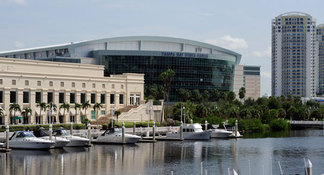
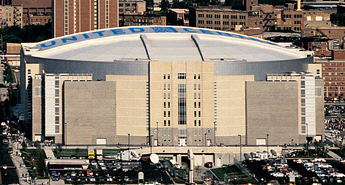
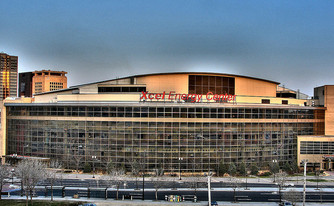
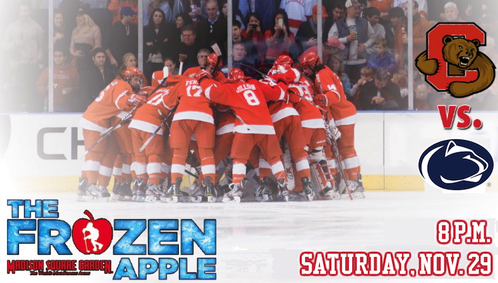

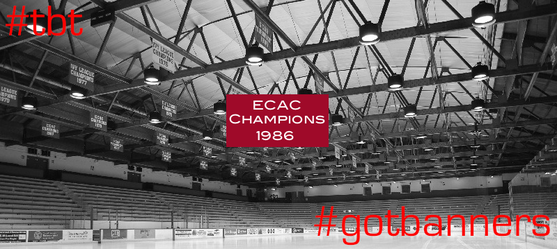
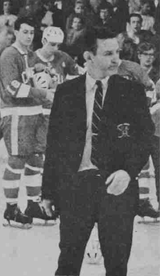
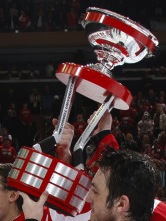
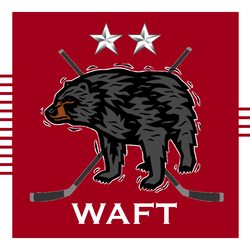

 RSS Feed
RSS Feed
